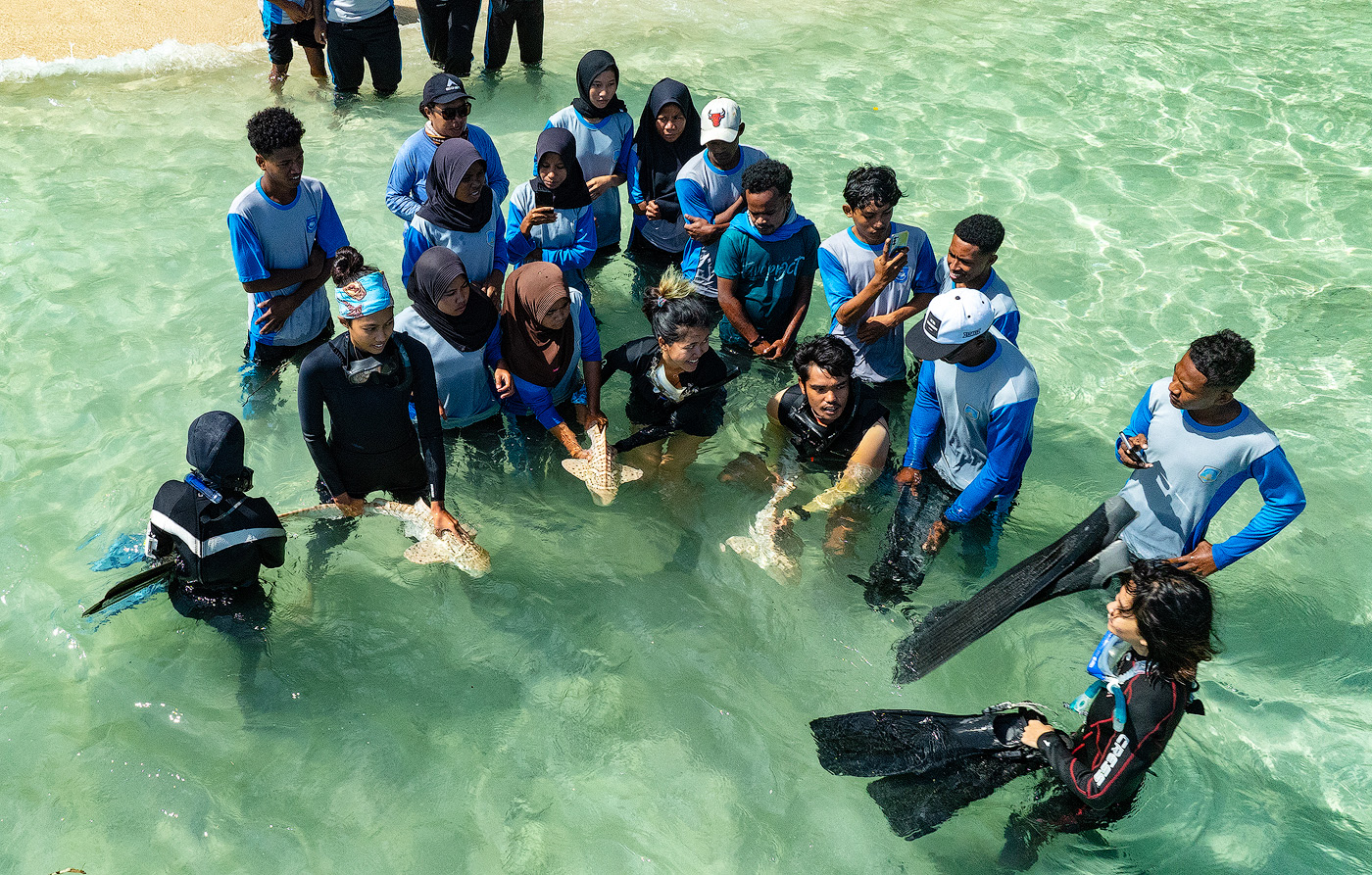Understanding Conservation in Raja Ampat… In just over 20 years Raja Ampat, the “Four Kings” of Indonesia’s remote West Papua province, has evolved from an almost unknown location into one of the world’s most sought-after tropical diving destinations.
Back in 2005, when I first visited the area, diving options were limited to just a few liveaboards and a couple of land-based “eco” resorts – essentially beach camps.
Today, at the height of the main diving season, nearly 100 boats operate in the area. And land-based accommodation ranges from basic village homestays to high-end luxury resorts.
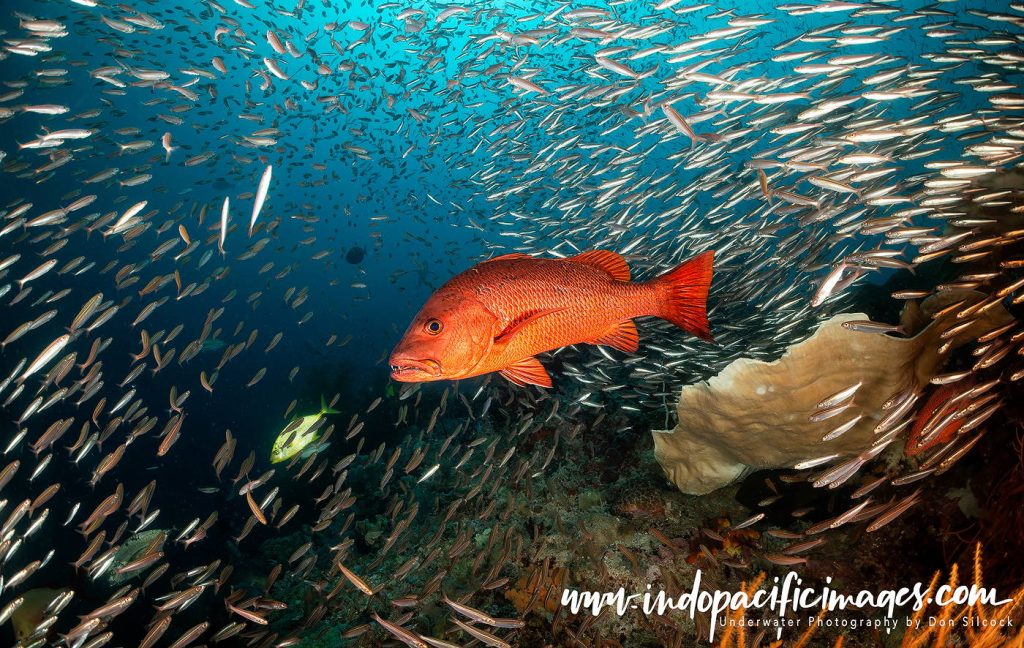
While much has changed, some things remain beautifully constant. Starting with the stunning landscape, which is as picturesque as ever.

And underwater, Raja Ampat’s renowned biodiversity is as vibrant today as it was during my first dive nearly two decades ago. Not only has that biodiversity been preserved, but top predators are making a strong comeback. In 2005, shark sightings were rare; now, they’re relatively common at many of the main dive sites.
Similarly, encounters with both reef and oceanic manta rays have increased significantly, making Raja Ampat one of the few places worldwide where manta ray populations are actually growing.
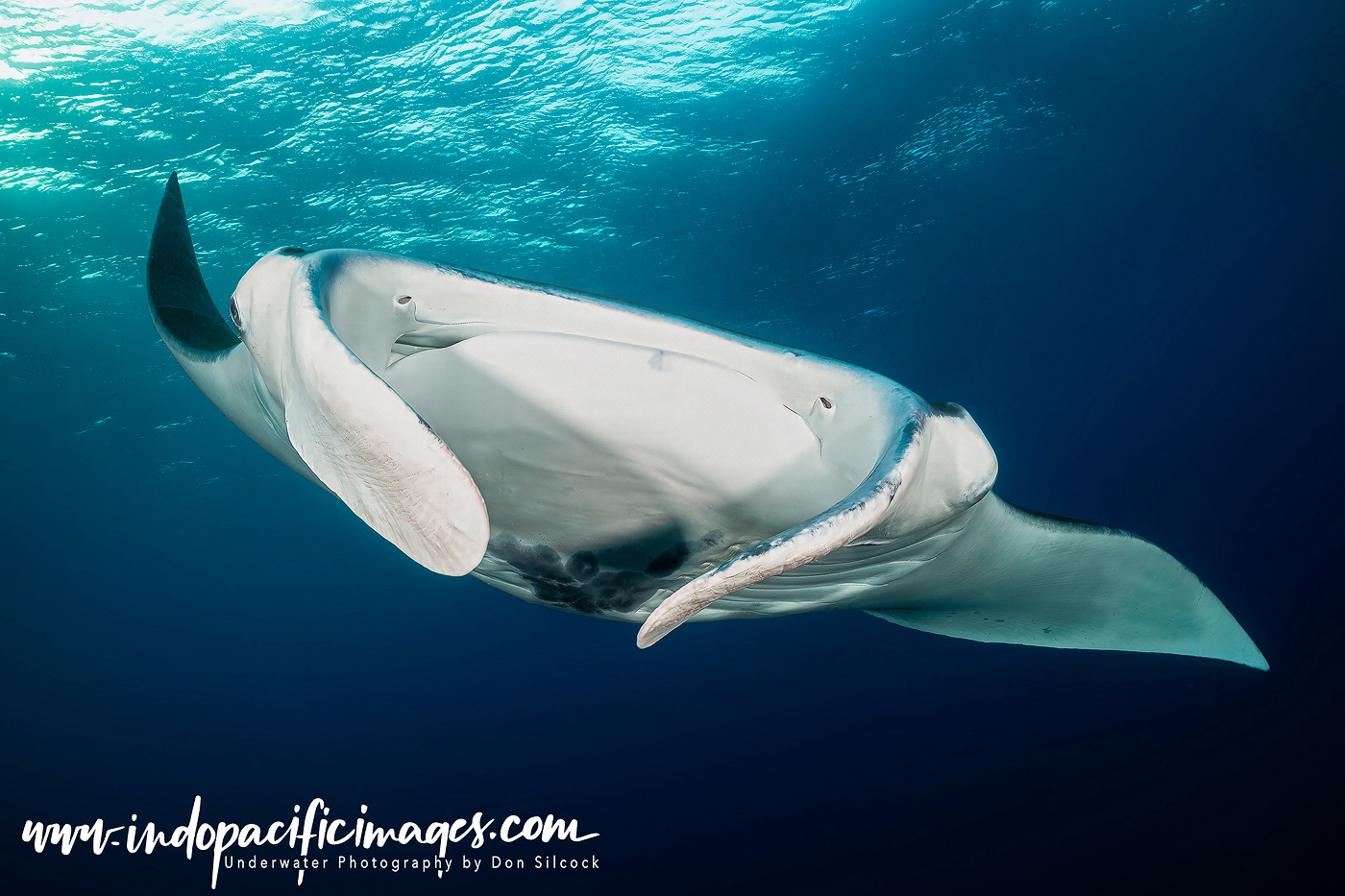
The changes above water are just as striking. Upon arrival in Sorong, you’re greeted by a modern airport that has replaced the run-down and dilapidated original.
The city itself has grown significantly due to domestic “transmigrasi“. And now boasts several department stores, shopping malls, and a range of decent hotels.
The Heavy Lifters…
So, how is it that so much growth has occurred and yet the environment and biodiversity have been largely protected, while specific areas of concern have been addressed? Indonesia after all has long struggled with a poor environmental reputation. Yet this remote outpost of the archipelago has become a shining example of broad-based, proactive conservation that has “lifted the boat” and all those in it!
Many people, both Indonesians and foreigners have played crucial roles in this remarkable story. However, a handful of key figures have done much of the heavy lifting. Over the last few years, I’ve had the privilege of getting to know some of these people, And I’ve been deeply inspired by the stories behind Raja Ampat’s conservation success.
This is the first in a series of articles exploring the conservation efforts in Raja Ampat, and highlighting the contributions of those individuals. And it starts with Mark Erdmann, whose deep understanding of the marine ecosystems is matched by a similar understanding of Indonesian culture and politics. Conbined with fluency in Bahasa and an incredible ability to explain, motivate and to get things done!
Understanding Conservation in Raja Ampat – Who is Mark Erdmann?
Mark Erdmann is an American coral reef ecologist with a Ph.D. from the University of California, Berkeley. Currently based in Auckland, New Zealand, where he moved in 2014 with his wife, Arnaz, and their children. Mark spent the previous 23 years living in Indonesia, where his connection to the region’s marine ecosystems began.
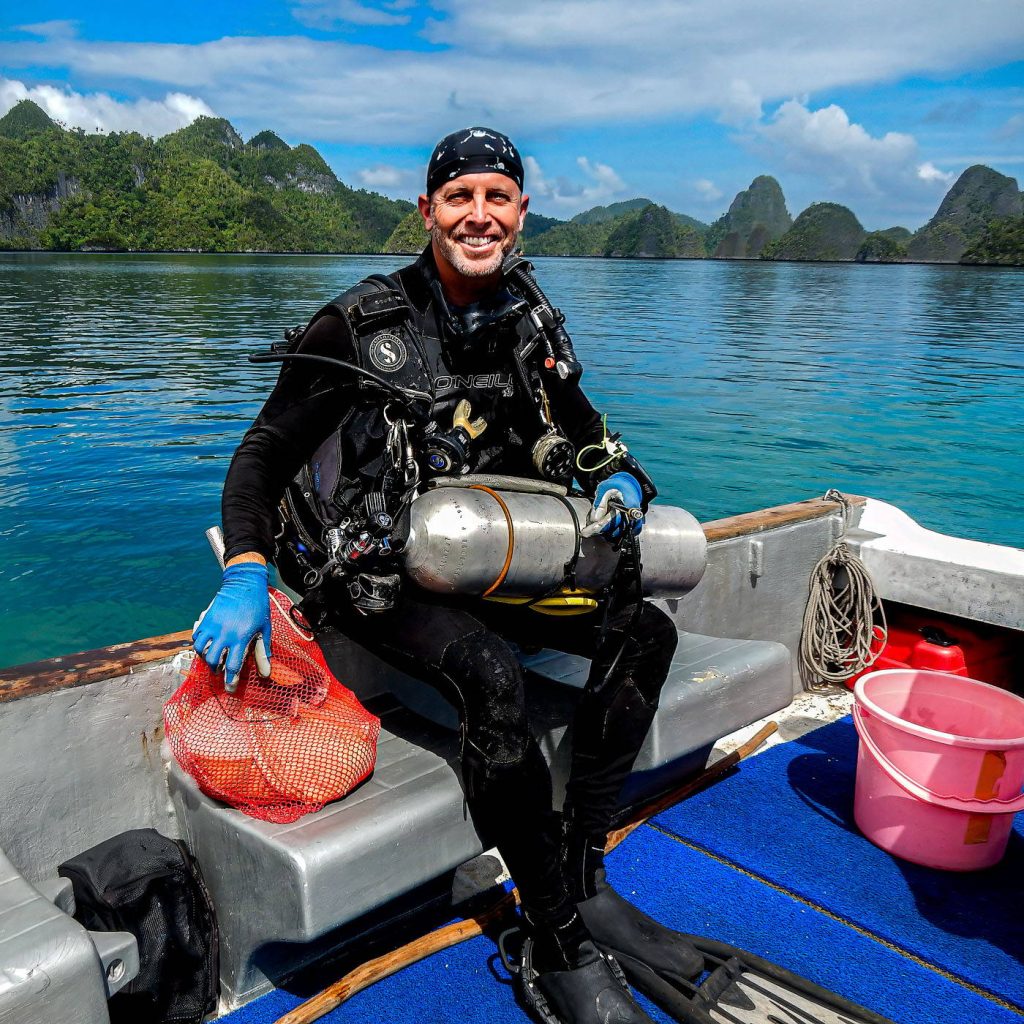
He is the Vice President of Asia Pacific Marine Programs for Conservation International (CI). Where he provides strategic guidance, technical expertise, and fundraising support to CI’s marine initiatives across the Asia Pacific. With a particular focus on West Papua and New Zealand.
Mark’s fieldwork is extensive, and he has logged over 14,000 scuba dives while surveying marine biodiversity throughout the region. His efforts have led to the discovery and description of 215 new species of fish, mantis shrimp, and corals.
An accomplished author, he has published 261 scientific articles and six books. Including the recently updated three-volume series, Reef Fishes of the East Indies, 2nd Edition, co-authored with Dr. Gerald Allen.
Mark Erdmann – The First Trip
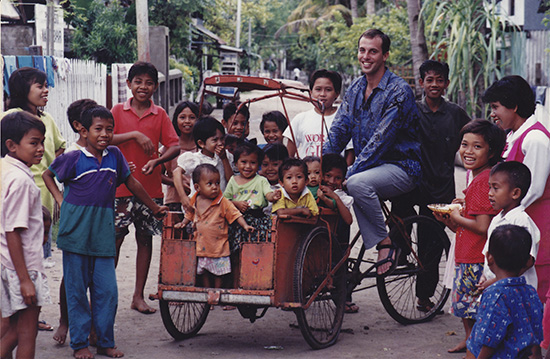
Mark Erdmann set foot in Raja Ampat for the first time in 2002. He was part of a small Nature Conservancy (TNC) expedition that had been tasked with validating a Conservation International report which had identified the region as the global epicenter of marine biodiversity.
Guided by Max Ammer, the pioneer of diving in Raja Ampat, within just a few dives Erdmann had confirmed that lofty claim in his own area of expertise – mantis shrimp (stomatopods).
Over the following years, he documented 56 species of reef-associated mantis shrimp in Raja Ampat. Establishing it as the most diverse marine area for those creatures in the world.
However, that initial trip also revealed to him that, rather than the pristine wilderness it first appeared to be. Raja Ampat’s biodiversity was in fact facing significant threats from blast and cyanide fishing, shark finning, and turtle poaching. And, at the end of that trip, two things were crystal clear to Mark Erdmann. Firstly urgent conservation efforts were needed to protect the unique marine environment he had seen. And secondly… he had found his calling!
Understanding Conservation in Raja Ampat – The Challenge!
The magnitude of the challenge Mark Erdmann faced back then is daunting and difficult to comprehend from today’s perspective. But let’s start with some basic facts…
Raja Ampat was a very remote area with a unique and highly refined culture, that was largely undocumented and often misunderstood. While, at the same time, the region was under intense pressure from greedy outsiders exploiting its resources with little regard for long-term consequences.
The obstacles were also formidable. Minimal infrastructure, significant logistical difficulties, and an almost total lack of enforcement capacity. All of which compounded the threats to Raja Ampat’s biodiversity.
And yet the situation wasn’t hopeless. If enough funding could be secured, those challenges were solvable. But where would the financial support come from, and how could it be used effectively to create sustainable, long-term solutions?
First Principles…

In 2004, Conservation International recruited Mark Erdmann to help develop and advise their Raja Ampat marine conservation program.
Providing him with the perfect platform to immerse himself in Raja Ampat’s extraordinary marine ecosystem.
Erdmann recognized that comprehensive data on Raja Ampat’s marine biodiversity would be crucial for rallying support from influential stakeholders. And securing the funding needed to sustain lasting conservation efforts.
Gathering this data would require two essential elements: identifying the full range of fish and coral species in Raja Ampat and documenting new species discoveries.
However, physically counting fish species in the dynamic and ever-changing environment of a thriving coral reef was nearly impossible.
And discovering new species presented further challenges, often demanding exploration at depths far beyond recreational diving limits.
Somewhat unexpectedly, it was in the wake of the catastrophic Boxing Day (Sumatra–Andaman) tsunami of 2004 that Erdmann encountered the person who would help him overcome these obstacles.
Understanding Conservation in Raja Ampat – Enter Gerry Allen
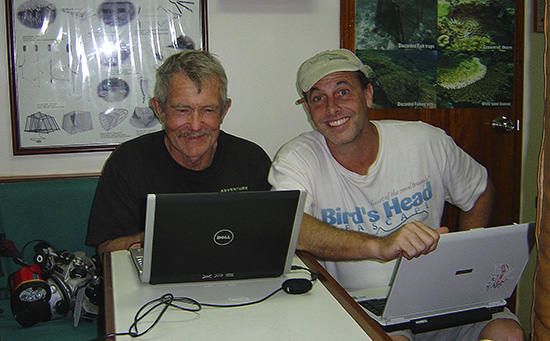
In early 2005, Conservation International assigned Erdmann to the team assessing tsunami damage to the reef systems around Weh Island in Sumatra, close to the earthquake’s epicenter.
There, he teamed up with renowned ichthyologist Dr. Gerry Allen.
Gerry had joined CI as the Science Team Leader for marine conservation surveys after serving as the Senior Curator of Fishes at Perth’s Western Australian Museum.
Gerry Allen is extremely knowledgeable about fish and their habitats. Having at that point in time, almost 40 years of academic and field experience.
But, most importantly for Mark Erdmann, he brought with him a way to accurately estimate the number of fish species on a given site – the Rapid Ecological Assessment (REA).
The two clicked instantly, forging a partnership that has spanned nearly 20 years and yielded remarkable results. Not least of which being the foundational data that Erdmann would base CI’s Raja Ampat conservation strategy on.
The Numbers… Because They Matter!
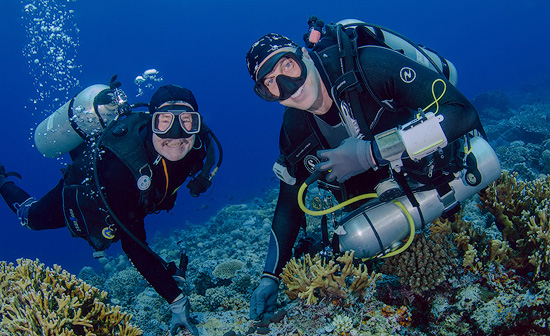
Often working together as a two-man survey team, Allen and Erdmann focus on specific depth zones to maximize their coverage of fish species in each targeted location.
Gerry typically surveys the shallower depths, down to around 40m. While Mark explores the deeper 40-70m range. And then spends his often-considerable decompression time focusing on counting dwarf gobies and other cryptic reef fishes in the shallows.
The numbers produced by those initial baseline surveys, and the numerous others that have followed, are quite amazing. With over 1660 species of reef fish and 574 species of coral identified.
Plus, more than 70 species of reef fishes, corals and crustaceans that are endemic to Raja Ampat and the broader Bird’s Head Seascape of West Papua. Which is how the area earned its “species factory” moniker.
Understanding Conservation in Raja Ampat – A Holistic Strategy
Armed with data confirming that Raja Ampat was indeed the global epicenter of marine biodiversity. Erdmann set to work with a top-notch team of Indonesian marine conservationists on an overarching conservation strategy. While the approach had many facets, the word holistic probably encapsulates itald best!
By this time, Erdmann had lived in Indonesia for around 14 years and was fluent in Bahasa. Which helped him navigate the often nuanced and opaque processes of local governance. With Indonesia’s Javanese-centric central government based in Jakarta and multiple districts (kecamatan) in Raja Ampat Regency. Achieving consensus across various governmental departments definitely required a nuanced approach.
Erdmann and his highly dedicated Indonesian team succeeded by grounding Conservation International’s strategy in data, using biodiversity figures as a catalyst for action. Equally essential to the strategy was to ensure that the needs and priorities of Raja Ampat’s local Papuan communities were central to the initiative.

These communities, rooted in Melanesian culture, have a strong tradition of marine tenure. Which encompasses not only the land and reefs but also the resources within those reefs. Erdmann and his team knew that while the Papuans might take pride in being custodians of the world’s most biodiverse reefs, their primary concern was securing their food resources in the face of outside fishing pressure.
Thus, when the idea of a marine protected area (MPA) network was introduced. It wasn’t framed merely as a way to protect biodiversity. Instead, the MPAs were presented as legal tools to reinforce the Papuans’ marine tenure rights, thrus strengthening their claim to the reefs and safeguarding the marine resources critical to their communities.
Skin in the Game!
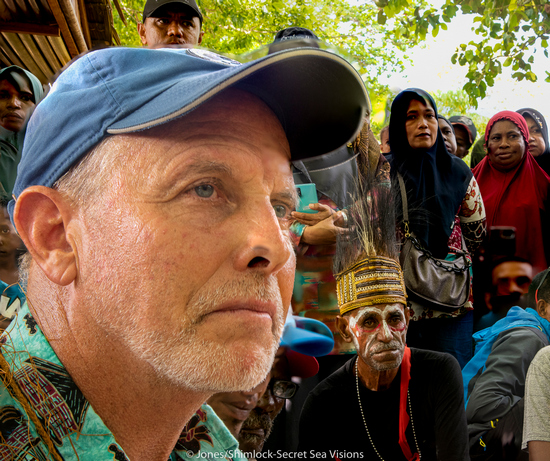
Erdmann’s team understood that empowering local communities to manage the MPAs would be essential to the long-term success of conservation efforts.
They worked closely with the Raja Ampat government to implement a ground-breaking model of local MPA management. Wherein communities defined their MPA boundaries, set the rules on what activities could and could not be conducted within them, and restricted access to outside fishers. Thereby securing their own food resources for the future.
Most importantly, the staff and rangers for each MPA were recruited directly from the local communities that owned the reef systems within the MPA.
In the short-to-medium term, bringing in external, tertiary-educated Indonesians to manage the MPAs might have seemed the easier path.
However, the team recognized that these individuals would likely be seen as outsiders. Disconnected from local realities and, ultimately, may wish to return to their own homes and families.
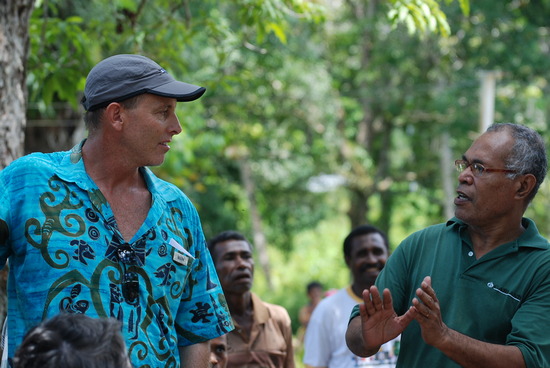
While few local Papuans had received tertiary education, Erdmann believed they more than compensated for that with their deep commitment to protecting their reefs and thereore their food supplies..
Erdmann also believed that any gaps in formal training could be addressed through targeted education programs.
Over the course of a decade, local Papuan MPA staff received extensive training in marine biology and resource management. The result is a testament to the power of investing in and empowering local communities.
Today, local communities are not only involved in but play a leading role in managing Raja Ampat’s reefs. Achieving a truly sustainable conservation model built on trust, cultural understanding, and shared stewardship.
Understanding Conservation in Raja Ampat – Status @ December 2024
Nearly 20 years after joining Conservation International, Mark Erdmann has risen through the ranks to become Vice President for Asia Pacific Marine Programs. His holistic strategy, first developed and implemented in 2004, has largely addressed the threats and challenges he identified early on (though new issues continue to present themselves…).
Over that time, a total of nine marine protected areas have been established in Raja Ampat. Including Indonesia’s largest marine national park. These MPAs now span over 1.2 million hectares of the world’s most biodiverse reefs. And are actively managed by local community members with a passionate commitment to conservation.
Where to From Here?
By 2014, it had become clear to Mark Erdmann that, while Raja Ampat’s extensive network of marine protected areas (MPAs) was highly effective at preserving the region’s unparalleled biodiversity. Certain species, particularly larger sharks and rays, would need additional support to fully recover their populations.
In response, Erdmann and his team dedicated significant energy to championing national-level protections for critical species such as reef and oceanic manta rays, whale sharks, and walking sharks. Their conservation efforts extended beyond policy advocacy, as they collaborated closely with the Raja Ampat Marine Protected Area Authority to introduce targeted tourism management regulations. These measures were aimed at minimizing human impact on vulnerable species, including safeguarding manta rays at cleaning stations and protecting nursery areas.
Understanding Conservation in Raja Ampat – Rewilding…
Despite these very focused efforts, some species continued to struggle, requiring further intervention to show tangible signs of recovery. Erdmann’s determination to address this challenge led to the creation of “ReShark”. An ambitious initiative sparked in 2015 when he observed the extraordinary success of Singapore’s SEAA Aquarium in breeding endangered leopard sharks. To the point of being overwhelmed by baby sharks!

Disappointed by the absence of any recovery in the leopard shark population in Raja Ampat. Erdmann envisioned a pioneering “rewilding” program, where eggs sourced from public aquariums around the world would be brought there and then hatched in specially designed nurseries in preparation for eventual release into the wild.
Making that rewilding vision a reality took almost ten years of painstaking planning. Ensuring it had both the support and assistance of the Indonesian government, those public aquariums and NGO partners.
Close collaboration with the IUCN Shark Specialist Group was another key factor, but the primary enabler was the local logistical support provided by a couple of conservation-minded resorts in Raja Ampat.
Specifically, Mark Erdmann singled out Max Ammer of Papua Diving together with Marit and Andrew Miners of Misool Resort.
Each of whom enthusiastically embraced the rewilding plan and happily allocated space and staff time to construct the first two ReShark nurseries on Kri and Batbitim islands, respectively. The first leopard shark pups, 21 in total, have now been released. And Erdmann’s team have established an ambitious goal of releasing at least 50 pups annually for the next eight years!
